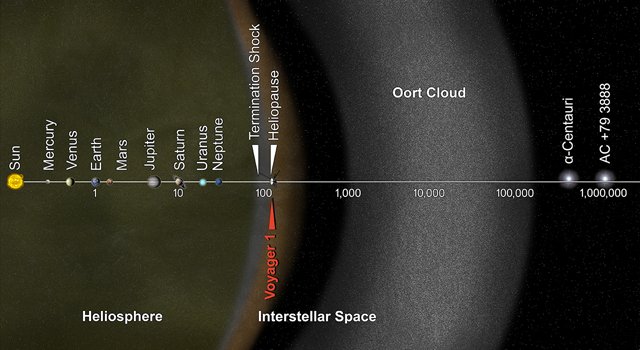

When NASA launched the Voyager 1 spacecraft in 1977, the primary goal was to collect data about our solar system — particularly the area beyond the asteroid belt (located between Mars and Jupiter). After more than forty years in space, Voyager 1, alongside its sibling probe, Voyager 2, has captured remarkable images and information about our neighboring planets and the Sun. Now, Voyager 1 is set to become the first human-made object to cover a complete light-day from Earth, an astonishing accomplishment for humankind. If everything proceeds as scheduled, the probe will be roughly 16 billion miles from Earth on November 15, 2026 — equivalent to one light-day.
Voyager 1 officially exited our solar system in August 2012, entering a zone of space known as the heliopause, where the solar wind from the Sun meets the cosmic void beyond. Traveling at approximately 38,000 miles per hour, it was only a matter of time before Voyager 1 approached this imminent milestone.
Slow and steady prevails in the interstellar journey
As part of the Voyager Interstellar Mission (VIM), the Voyager 1 and 2 probes have been functioning in the post-heliopause phase since 2012 and 2018, respectively. The present mission goals include the assessment of magnetic fields, particles, and plasma waves in interstellar space.
The VIM actually extends Voyager’s original mission, which was successfully completed in 1989 when Voyager 2 passed by Neptune. While NASA anticipates that both probes may soon lack sufficient power to operate their scientific instruments, the impending light-day accomplishment serves as an amazing reminder of the vast distances humanity has reached.
Moreover, it’s notable that Voyager 1 was created using 1970s technology, yet it continues to gather data nearly fifty years after its launch; Voyager 1’s signals, traveling billions of miles through space, still reach Earth’s antennas with adequate strength for scientists to analyze the data.
A Golden Record awaits those who find the probe
If extraterrestrials exist and they happen upon Voyager 1, we Earth inhabitants have prepared them a splendid welcome gift. The probe carries the “Golden Record,” a 12-inch gold-plated copper disk that holds sounds and images from Earth, along with a set of instructions on how to reach us.
The visuals and audio selections were curated for NASA by a committee led by Carl Sagan from Cornell University. This collection of natural sounds from Earth includes surf, thunder, wind, birds, and whales, as well as musical pieces from various periods and spoken greetings from humans in over 55 languages. The disk also features printed messages from President Carter and U.N. Secretary General Waldheim.
While we cannot be certain that Voyager 1 will ever be found by a sentient being capable of comprehending it, what remains true is that, in 1977, humanity created this charming time capsule to offer our possible cosmic counterparts a glimpse into the sights and sounds that define our humanity. (I’m not crying, you’re crying.)